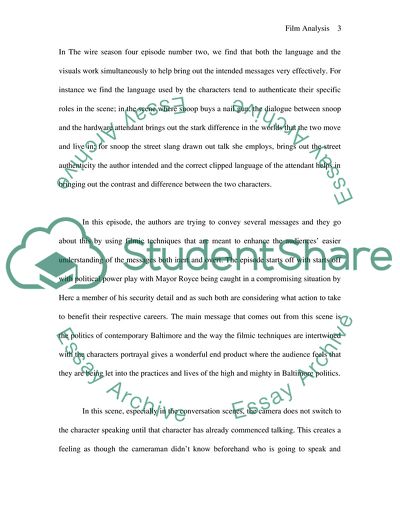Cite this document
(The Wire: Episodes 1, 2, and 3 Movie Review Example | Topics and Well Written Essays - 2000 words, n.d.)
The Wire: Episodes 1, 2, and 3 Movie Review Example | Topics and Well Written Essays - 2000 words. https://studentshare.org/visual-arts-film-studies/1781807-rhetorical-analysis-of-the-wire-season-4-episode-123
The Wire: Episodes 1, 2, and 3 Movie Review Example | Topics and Well Written Essays - 2000 words. https://studentshare.org/visual-arts-film-studies/1781807-rhetorical-analysis-of-the-wire-season-4-episode-123
(The Wire: Episodes 1, 2, and 3 Movie Review Example | Topics and Well Written Essays - 2000 Words)
The Wire: Episodes 1, 2, and 3 Movie Review Example | Topics and Well Written Essays - 2000 Words. https://studentshare.org/visual-arts-film-studies/1781807-rhetorical-analysis-of-the-wire-season-4-episode-123.
The Wire: Episodes 1, 2, and 3 Movie Review Example | Topics and Well Written Essays - 2000 Words. https://studentshare.org/visual-arts-film-studies/1781807-rhetorical-analysis-of-the-wire-season-4-episode-123.
“The Wire: Episodes 1, 2, and 3 Movie Review Example | Topics and Well Written Essays - 2000 Words”. https://studentshare.org/visual-arts-film-studies/1781807-rhetorical-analysis-of-the-wire-season-4-episode-123.


